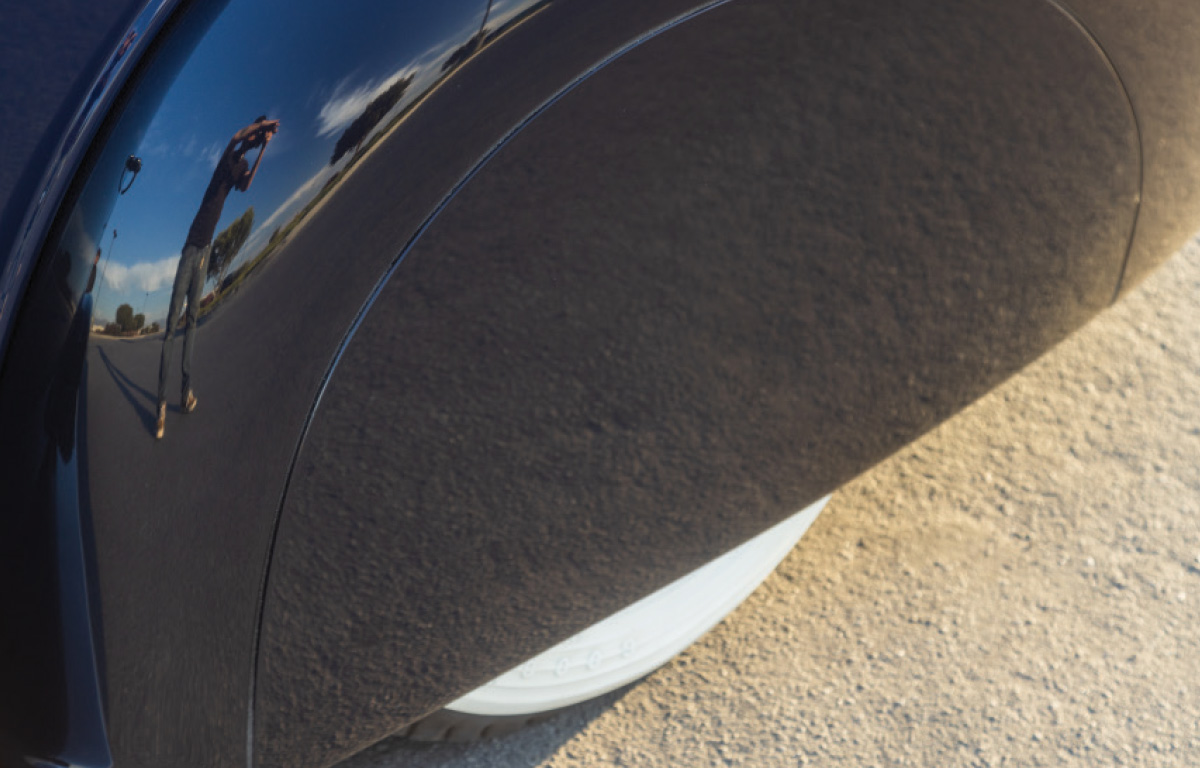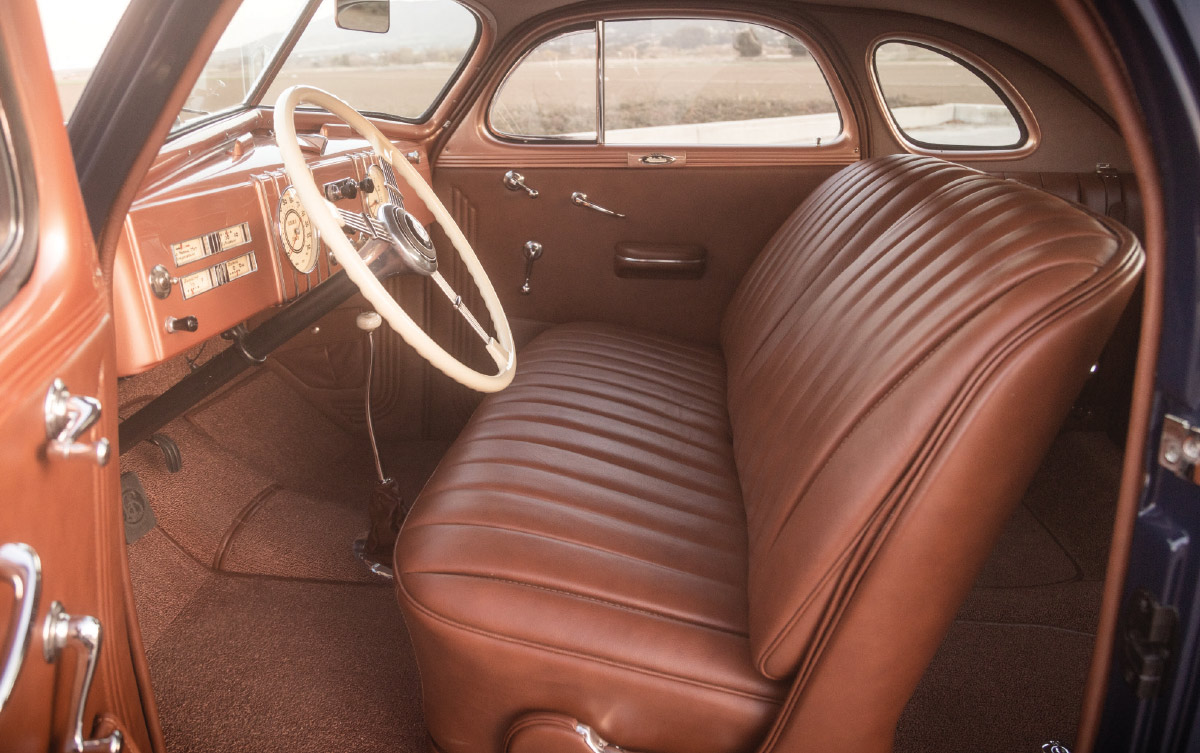 Photography by Tim Sutton
Photography by Tim Sutton
ustoms designed and crafted today are a far cry from the customs of the ’60s yet each have their place in our world. Garrett Jedlicki of Minnesota is no stranger to the world of hot rods or customs, and neither is his association with Cole Foster of the Salinas Boys Customs. As such, it shouldn’t come as a surprise that the pair teamed up once again to test their “limits.” The result is the ’37 LaSalle Opera coupe done in a modern custom car approach. (A few years back Foster built a traditional ’32 Ford highboy roadster for Garrett, complete with an ARDUN-powered Flathead. Simple in its approach yet exceptional in its result.)
Garrett had his heart set on the Series 50 while Foster was harboring more of a ’40 Merc feel. In time, Foster grew to see that much could be done with this successful ’30s car by bringing his ideas to the forefront in making this a modern-day custom. Because of the inherent trust each had for the other the geographic “undesirability” proved not to be an issue. Foster proudly stated, “Let me do my thing without red flagging me.”
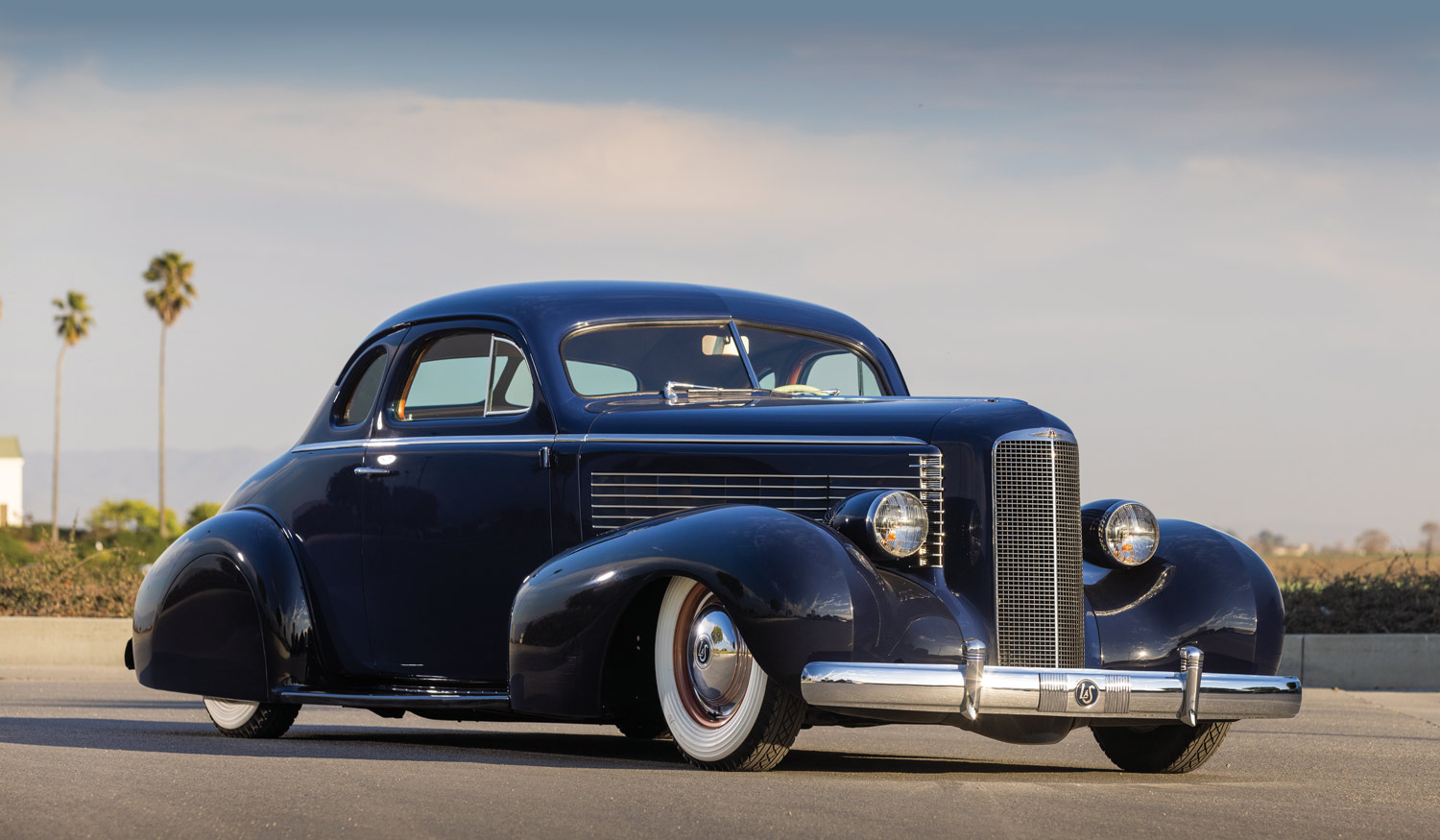
In Foster’s mind he didn’t want to change the LaSalle for change’s sake but rather “… take away aspects of the car that I thought were out of place or proportion.” Working from this viewpoint it was decided that a mild chop, 2-3/4 inches, would be taken out of the roof. The flush rear fender skirts added 2 inches to the wheelbase while the reshaped front wheelwells and the lowering of the headlights, by almost 6 inches, gave Foster the look he was after. The Salinas Boys–fabricated running boards were designed to bridge the gap and give a “look” between the front and rear fenders. In doing so the visual made the profile the low front-to-rear view Foster was after. Other subtle but worthwhile modifications included the shaved trunklid and the fresh taillight bezels that surround the N.O.S. Plymouth taillight lenses.
Also in 1937, the LaSalle eggcrate grille became noticeably restyled with a deeper and narrower look. The new grille shell also added to the appearance of the new windshield that featured a 24-degree sloop. The new, for 1937, six rows of horizontal louvers on the hood were retained by Foster in the final build.
Foster handled the bodywork and at this point the car was taken across town to Matt Sherman to spray the two-tone House of Kolor paint. Look closely and you will see the body, while a deep blue, is lighter in tone then the darker blue fenders and running boards.

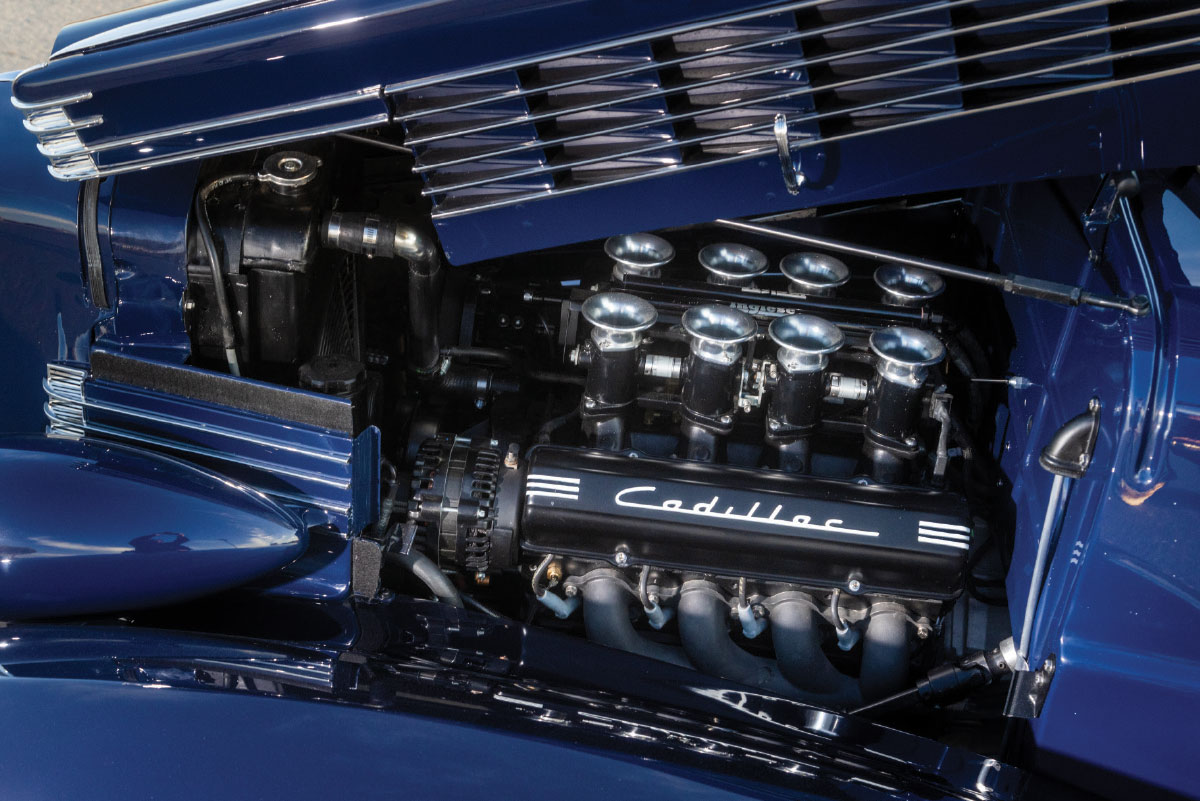
The chassis project was turned over to Chad Gravelle, longtime friend of Foster and an accomplished race car fabricator. According to Foster, “… Gravelle built this really beautiful chassis with sweeping rear framerails and long-arm truck-style links with his own frontend with rear steer suspension.” He used Mittler Bros. HydroShox at the corners, allowing the ’37 LaSalle to ride at the height it is set. The suspension controller rests under the passenger front fender while the battery rests on the driver front fender. A two-piece driveshaft was also used, allowing for the sheetmetal tunnel to be minimal, leaving additional floorspace. In back the suspension is based on a Speedway 9-inch rearend, Wilwood six-piston caliper brakes (front and rear), and the rolling stock is stock wheels and caps with Goodyear 16×7.00 rubber.
Power for this custom wash was handled by a late-model LS6 built by Garret and company and then shipped to California in a stain black finish. The V-8 sports Inglese EFI and Cadillac valve covers. The LS6 is hooked up to a 4L80E trans.
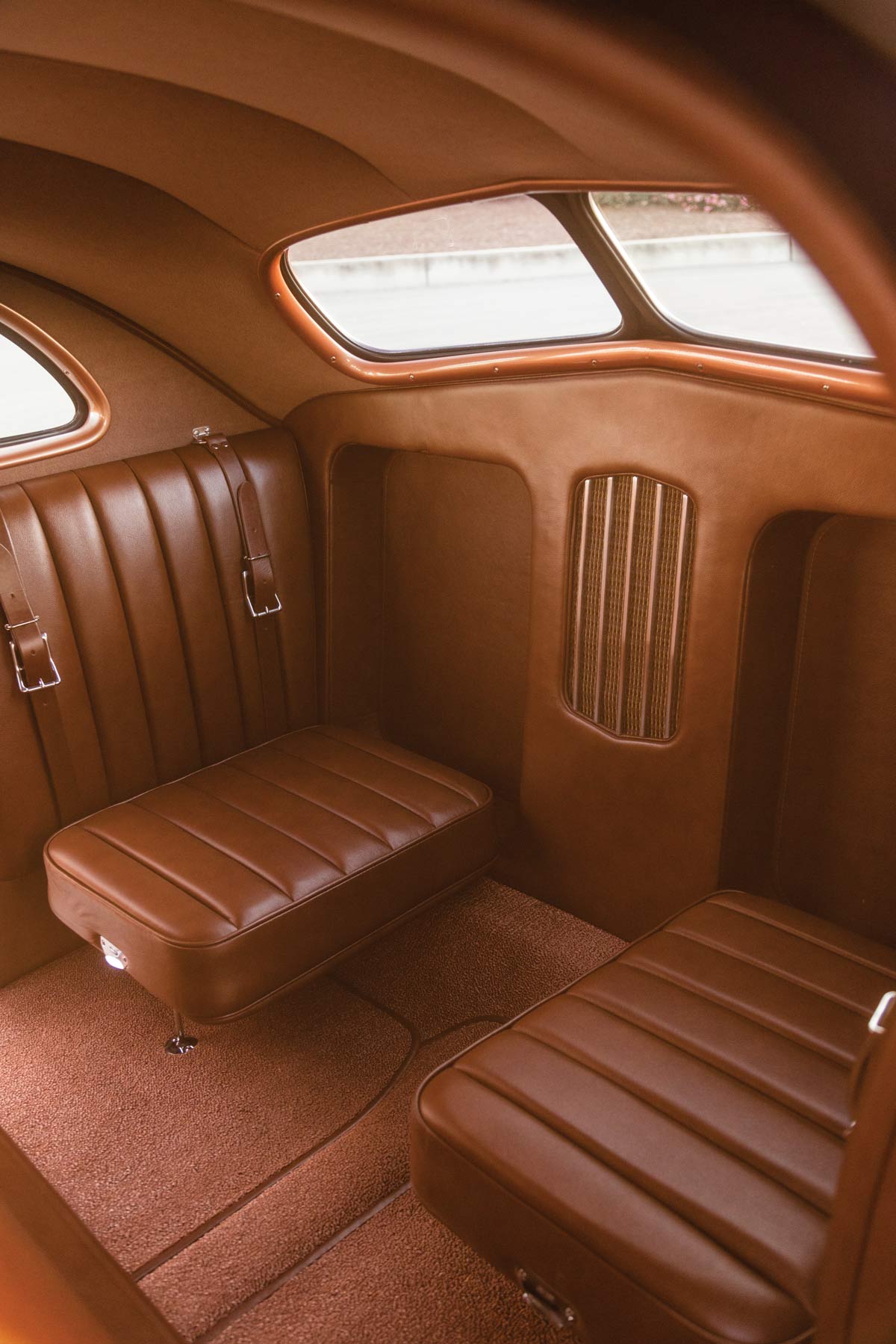


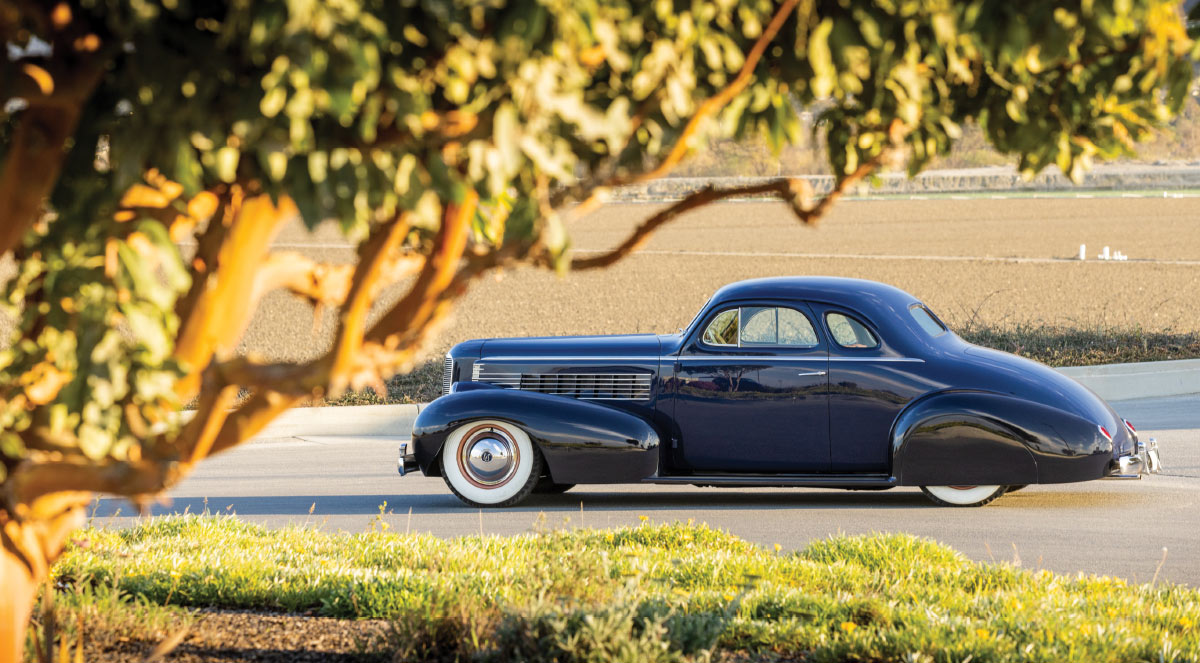
As with any project it takes a “village” of talent to get the job done. Foster enlisted the likes of Gravelle, Plante, Job Stevens, and Kevin Desrosier.
The car made its initial appearance at this year’s Grand National Roadster Show and was listed in the Slonaker competition. Both Garrett and Foster were comfortable knowing they weren’t showing the LaSalle as a serious competitor but entering the car would be fun. In fact, the low-slung display piping was borrowed by Foster’s fellow hot rodder friend Jimmy Shine. In the conversations we listened to there were many who thought the LaSalle made a strong statement.
